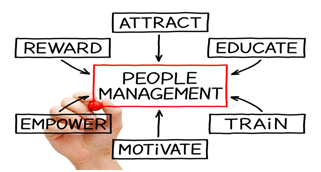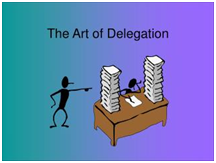 In Part 1, we discussed:
In Part 1, we discussed:
1) The keys to organizational success typically can be found in the three Ps:
- People
- Processes
- Products/Services
2) People are sometimes hard to manage, but we have to be skilled at it
In the agricultural period of history, shepherds played a key role. Their role was to tend, herd, feed, and guards herds of sheep. Sheep represented an extremely valuable asset, and so this role was an important one.
To be clear, I’m not comparing sheep to people. However, consider this, almost all organizations contend that people are their most valuable asset. When we connect the dots, here’s a logical conclusion:
- Regardless of organization size, industry or others factors, it makes sense for us to view supervisors, managers and executives as “shepherds of people”.
With that being valid, what are the attributes of a “shepherd of people?
1) Boundaries
- A true leader will establish and maintain boundaries—just as the shepherd had a sheep pen within which he gathered his sheep.
- Relationship are defined and preserved by boundaries. Stepping over those boundaries can damage or destroy the relationship.
- These boundaries include appropriate ethical and moral boundaries.
2) Trustworthy
- A leader needs to cultivate a deep sense of trust from those she/he leads.
- The late Stephen covey in his classic book entitled “The Speed of Trust” wrote the following:
- Simply put, trust means confidence…When you trust people, you have confidence in their integrity and in their abilities”.
To obtain perfect results you need to eat up 50mg per kg of weight upon waking, then a more 50mg per kilogram of weight around a half hour before education to have the very best effects for erectile dysfunction in men. more helpful tabs levitra 20 mg has a lot of benefits when we talk about the benefits which it provides to the men.
- Those under our shepherding develop trust in us when there is:
- Honesty: truthfulness and disclosure
- Openness: willingness to share information and ideas
- Consistency: predictable behaviors and responses
- Respect: treating others fairly and with dignity
- Integrity: keeping our word, promises & commitments
3) Example
- A true leader leads by example, and thus is a model people consider worth following.
- She/he does not say, “do as I say, not as I do”.
- She/he says, “let’s go”, not “go”—that one word (“let’s”) sends a powerful message.
In Part 3 of this series, we’ll look at other attributes of a “shepherd of people”.
If your organization needs help with people management, Trinity’s Team of Consultants can provide expert and affordable assistance.
For more information:
- E mail Trinity at info@TrintyHR.net
- Visit our website at www.TrinityHR.net
- Call us at 856.905.1762 or Toll Free at 877.228.6810
You have HR challenges…Trinity has solutions!








